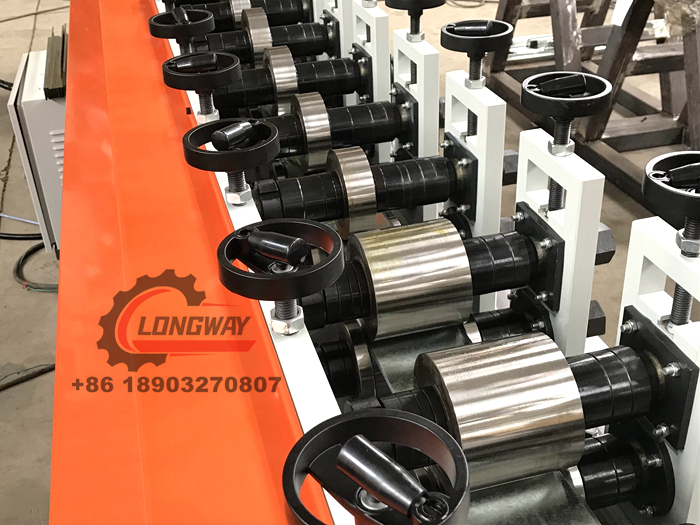High-Quality Sheet Metal Roll Forming Solutions for Efficient Manufacturing Processes
The Art and Science of Sheet Metal Roll Forming An Insight into Manufacturing Excellence
Sheet metal roll forming is a sophisticated manufacturing process that involves shaping metal sheets into specific profiles through a series of rollers. This technology has become a cornerstone of modern manufacturing, particularly for industries that require high-quality, precision components. As a sheet metal roll forming manufacturer, understanding the intricacies of this technique is vital to producing durable and effective products.
At its core, roll forming involves feeding a continuous strip of metal through a series of rollers that progressively shape it into the desired cross-sectional profile. The process is characterized by its ability to produce long lengths of uniform parts with tight tolerances. Common materials used in roll forming include aluminum, steel, and various alloys, which are selected based on the application's specific requirements.
One of the primary advantages of roll forming is its efficiency. Once the initial setup is complete—including the design and modification of the roll tooling—manufacturers can achieve high production rates with minimal waste. Unlike other methods such as stamping or machining, which can produce scrap material, roll forming utilizes the entire strip of metal, making it an environmentally friendly option. Moreover, the continuous nature of the process allows for longer and more complex shapes to be created without the limitation of batch production.
Quality control is another essential aspect of sheet metal roll forming. Manufacturers invest heavily in precision engineering and strict quality assurance protocols to ensure that every part meets rigorous industry standards. This involves regular inspection of the tooling, monitoring of the roll forming process, and testing of the finished products. Advanced technologies, such as computer-aided design (CAD) and computer-aided manufacturing (CAM), play a critical role in ensuring precision from design through to production.
sheet metal roll forming manufacturer

Customization is key in the competitive landscape of manufacturing, and sheet metal roll forming manufacturers are often required to adapt their processes to meet unique specifications. This has led to the development of versatile roll forming machines that can handle different materials and profiles. The ability to quickly adjust setups enables manufacturers to offer tailored solutions to clients spanning various industries, including automotive, construction, and HVAC.
Sustainability is another growing concern within the manufacturing sector, and sheet metal roll forming manufacturers are actively seeking ways to minimize their environmental footprint. This includes optimizing energy consumption during the manufacturing process, using recyclable materials, and implementing waste management strategies to reduce scrap. Many manufacturers are embracing green practices to align with global sustainability goals and meet the increasing demand for eco-friendly products.
Innovation is at the heart of the sheet metal roll forming industry. As technology advances, manufacturers are exploring new methods and materials to enhance productivity and product functionality. For instance, advancements in automation and robotics are streamlining production processes and enabling manufacturers to respond more rapidly to market demands. The integration of artificial intelligence and machine learning in manufacturing processes also offers opportunities for predictive maintenance, further enhancing efficiency and reducing downtime.
In conclusion, being a sheet metal roll forming manufacturer is not just about shaping metal; it's about embracing a blend of artistry and technical expertise. The process combines efficiency, quality, customization, and sustainability. As the manufacturing landscape continues to evolve, those who harness the benefits of sheet metal roll forming while adapting to new technologies and market needs will lead the charge in producing the innovative solutions of tomorrow.
-
Top Drywall Profile Machine Models for SaleNewsJun.05, 2025
-
The Role of Purlin Machine in Modern Structural BuildingNewsJun.05, 2025
-
The Advantages of Investing in a Metal Roof Sheet Making MachineNewsJun.05, 2025
-
Key Features of Hydraulic Bending MachineNewsJun.05, 2025
-
Innovations in Standing Seam Metal Roof Machine TechnologyNewsJun.05, 2025
-
High - Performance Roof Panel Machine for SaleNewsJun.05, 2025
-
Key Features to Look for in a Roof and Wall Panel MachineNewsMay.23, 2025








